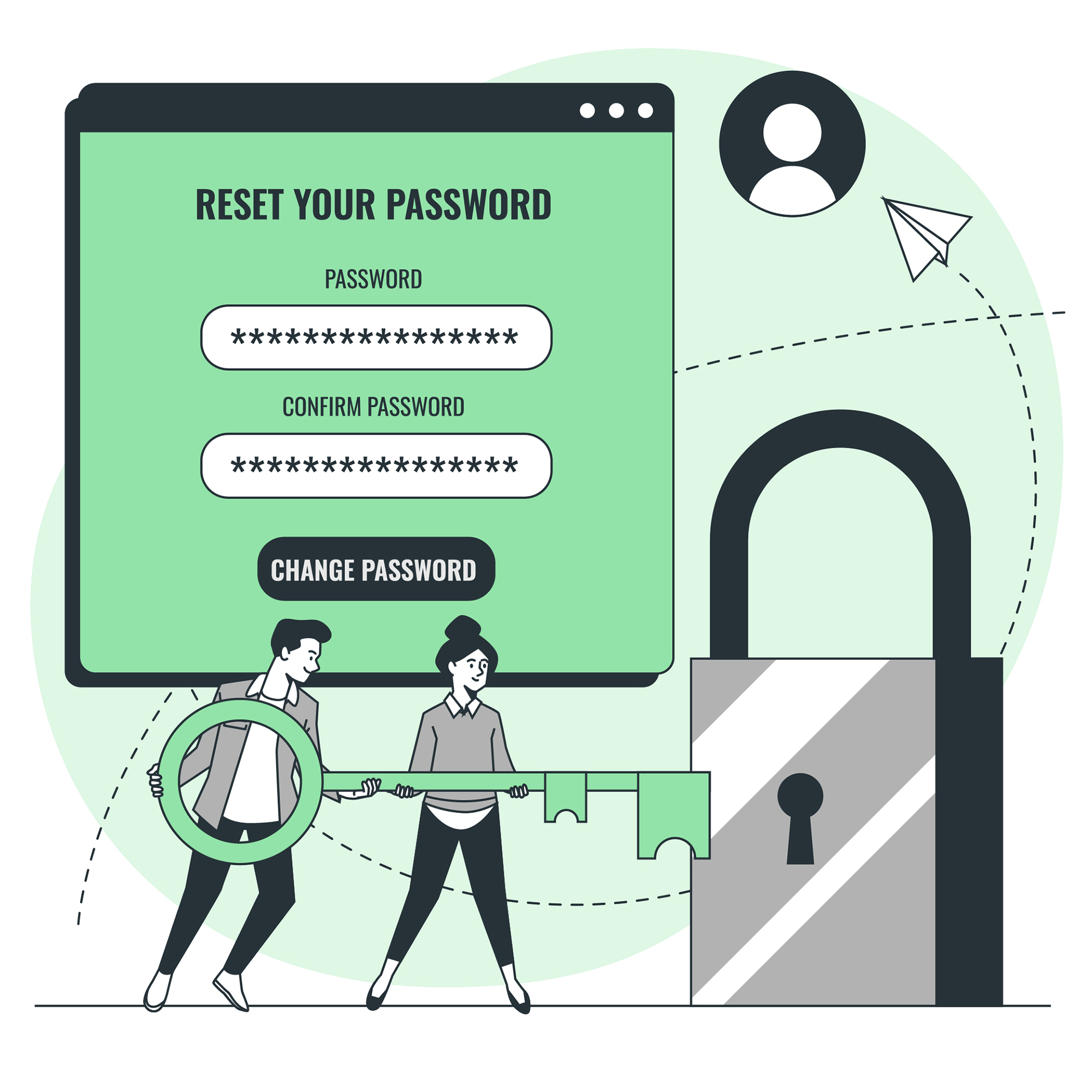Understanding the Risks
When you use your social media accounts to log into other websites, you’re essentially giving those sites access to your personal information stored on your social media profiles. This practice, known as single sign-on (SSO), offers convenience but comes with significant security risks.
Why It’s Concerning
- Data Breaches: If a site experiences a data breach, attackers can gain access to your social media account credentials, potentially leading to identity theft or financial fraud.
- Information Overload: By linking your social accounts, you’re providing third-party sites with extensive personal data, which can be misused or sold to advertisers.
- Security Lapses: Third-party sites may not have the same level of security as major social media platforms, leaving your data vulnerable to hackers.
Practical Examples
Imagine logging into a news website using your Facebook account. The website gains access to your name, profile picture, email address, and even your friends list. Now, if this news site suffers a data breach, your personal information could be exposed. Additionally, the website now knows which of your friends also visit the site, creating a detailed profile of your online behavior.
Mitigating the Risks
To minimize the risks associated with using social accounts for logging into other sites, consider the following strategies:
- Read Privacy Policies: Before granting access, review the privacy policy of the site you’re logging into. Understand what data they’ll access and how it will be used.
- Enable Two-Factor Authentication (2FA): Adding an extra layer of security can significantly reduce the risk of unauthorized access to your social media accounts.
- Limit Access: Be selective about which sites you allow to access your social media accounts. Choose reputable sites that prioritize user privacy and security.
While using social accounts to log into other sites offers convenience, it’s crucial to weigh the benefits against the potential security risks. By being informed and taking proactive steps to secure your information, you can enjoy the ease of SSO without compromising your personal data.
The Dangers of Using Social Accounts for Logins
Don’t Fall for the Convenience Factor
In today’s digital landscape, convenience is king. One of the most compelling aspects of modern technology is its ability to simplify our lives. For many, logging into websites and apps using social media accounts offers a quick and easy way to bypass the tedious process of remembering another username and password. Imagine having a single key that unlocks all your digital doors—your social media accounts become that key. This convenience, however, is not without its drawbacks.
The Security Risks
While the ease of logging in with social accounts might seem like a no-brainer, it introduces several security concerns. When you use your social media login credentials to access third-party services, you’re essentially giving them a direct line to your personal data stored on those platforms. If a hacker gains access to one of these services, they could potentially unlock a treasure trove of information about you.
Example: A Breach Scenario
Let’s say you use your Facebook login to sign up for a new fitness app. If the app’s database gets compromised, the attacker doesn’t just get access to your workout logs—they also gain entry to your Facebook account, which could lead to identity theft, financial fraud, or worse.
Privacy Implications
Beyond security threats, there’s also the issue of privacy. Every time you log in with a social account, the third-party service learns more about you. They can gather insights into your interests, friends, and even your location. Over time, this data collection can paint a detailed picture of your life, which may be sold to advertisers or used in ways you didn’t consent to.
Example: Data Harvesting
Logging into a news site with your Google account means the site can track what articles you read, when you read them, and possibly even infer your political leanings based on your reading habits. This information can then be used to tailor ads specifically to you, sometimes in ways that feel invasive.
Practical Steps to Mitigate Risks
Despite the potential downsides, it’s understandable why people choose convenience over caution. Here are some steps you can take to reduce the risks associated with using social logins:
- Limit Social Logins: Use social logins sparingly and only with trusted sites.
- Enable Two-Factor Authentication (2FA): Adding an extra layer of security can protect your accounts even if your password is compromised.
- Regularly Review Permissions: Check the permissions you’ve granted to third-party apps and revoke those you no longer trust.
- Consider Alternative Login Methods: Some services offer alternative login methods, such as email links, which can be safer than social logins.
While the allure of convenience is strong, it’s crucial to weigh the benefits against the potential security and privacy risks. By being mindful of how and when you use social logins, you can enjoy the best of both worlds—convenience without compromising your safety and privacy.
The Safety of Using Social Accounts for Site Logins
Understanding Social Logins
Social logins, often referred to as Single Sign-On (SSO) mechanisms, present a convenient method for accessing various online platforms with just one set of login credentials from a social media account. This convenience comes from leveraging the vast user databases of social networks like Facebook, Google, and Twitter, which already require users to create and manage profiles. By allowing these platforms to authenticate users for third-party websites, SSO aims to streamline the login process, making it quicker and easier for users to get started without the hassle of creating new accounts or remembering additional passwords.
Benefits Beyond Convenience
While the primary allure of social logins is the ease of access and simplified password management, there are deeper benefits at play. For instance, once authenticated via a social platform, users can enjoy a more personalized browsing experience. Websites can tap into the wealth of data stored within a user’s social media profile to deliver content that is more aligned with their interests and preferences. This level of personalization can significantly enhance the user experience, making interactions with online services feel more tailored and relevant.
The Safety Concerns
Despite its advantages, the practice of using social accounts for logging into other sites raises legitimate concerns about privacy and security. When you opt to log in with Facebook or Google, you’re essentially granting those platforms access to your account information on the site you’re trying to access. This means that the third-party website now has the potential to see and store some of your personal data, depending on what permissions you grant during the login process.
Practical Considerations
It’s crucial to approach social logins with caution and be mindful of the permissions you grant. Before choosing to log in with a social account, consider whether the trade-off between convenience and privacy aligns with your comfort level. If a website requires extensive access to your social media data beyond what’s necessary for authentication, it might be wise to seek alternative login methods. Additionally, staying informed about the privacy policies of both the social media platforms and the websites you interact with is essential for making educated decisions about your online activities.
Conclusion
In summary, while social logins offer significant convenience and the potential for a more personalized online experience, they do come with inherent risks to privacy and security. It’s important for users to weigh these factors carefully and make informed choices when deciding whether to use their social accounts for logging into other sites. By doing so, individuals can enjoy the benefits of streamlined access without compromising their personal information or online safety.
The Dangers of Using Social Accounts for Site Logins
Understanding the Risks
Social logins offer a quick and easy way to access various websites without remembering numerous usernames and passwords. However, this convenience comes with significant security and privacy risks. When you choose to log in with your social media accounts, you’re essentially handing over a key to your digital life, granting broad permissions that can extend far beyond just accessing a website.
Privacy Concerns
Imagine sharing your house keys with a stranger who then has access to every room, including your private spaces. That’s akin to what happens when you link your social media accounts to third-party sites. You expose not just your username but also detailed personal information, such as your friends list, email address, and more. This wide-ranging access increases the likelihood of privacy invasions and unauthorized access to your personal data.
Security Vulnerabilities
The security of your login credentials is only as strong as the weakest link in the chain. Major breaches at social media companies like Facebook and Twitter have demonstrated how quickly vulnerabilities can be exploited, affecting millions of users across various platforms. These incidents underscore the importance of understanding that relying on social logins makes you vulnerable to the same security threats faced by the social media platforms themselves.
Dependence on Third-Party Platforms
By relying on social logins, you become dependent on third-party platforms. If these platforms are compromised or decide to discontinue their services, you could find yourself locked out of your online accounts, unable to access essential services without regaining access through traditional means. This dependency highlights the need for a balanced approach to convenience versus security.
Practical Steps to Mitigate Risks
While social logins may seem convenient, taking proactive steps can help mitigate the associated risks:
- Limit Permissions: Whenever possible, limit the permissions granted to third-party apps during the login process. Choose “Log in with Google” instead of “Access my entire Google profile,” for example.
- Enable Two-Factor Authentication (2FA): Adding an extra layer of security by enabling 2FA on your social media accounts can significantly reduce the risk of unauthorized access.
- Regularly Review App Permissions: Periodically check and revoke permissions for apps that no longer require access to your account.
- Consider Alternative Login Methods: For critical accounts, consider using alternative login methods that don’t rely on social media platforms.
In conclusion, while social logins offer ease of access, they come with substantial security and privacy risks. By being mindful of the permissions you grant and taking proactive steps to secure your accounts, you can enjoy the convenience of social logins without compromising your personal information and online safety.
The Dangers of Using Social Accounts for Site Logins
Understanding the Risks
When you use your social media accounts to log into other websites, you’re essentially granting those sites access to your personal information stored on your social profile. This practice, known as “social login,” offers convenience but comes with significant risks. It’s akin to giving a stranger your house key without knowing who they are or what they plan to do with it.
Protecting Your Online Identity
To mitigate these risks, it’s imperative to take a proactive stance towards your digital security. Here are some actionable steps:
- Review Permissions: Periodically check which third-party apps and websites have access to your social media accounts. This can often be found in the privacy settings of your social media profiles.
- Strong Passwords: Use robust, unique passwords for each of your social media accounts. This reduces the impact if one account is compromised.
- Regular Audits: Conduct regular audits of the apps and websites connected to your social accounts. Remove any that you no longer use or trust.
Broader Implications of Social Login Breaches
The consequences of a social login breach extend far beyond the platform where the breach occurred. Since many services link directly to your social media accounts, a single point of failure can compromise your entire online identity. This interconnectedness means that the security of your online presence is only as strong as its weakest link.
Practical Example: A Case Study
Imagine you use Facebook to log into a news website. If your Facebook account is hacked, the hacker could potentially gain access to your news website account as well, depending on the permissions you’ve granted. This highlights the importance of being cautious with the permissions you grant during the social login process.
Conclusion
While social logins offer ease and convenience, they also introduce potential vulnerabilities. By adopting a vigilant approach—reviewing permissions, using strong passwords, and conducting regular audits—you can significantly reduce the risk to your online identity. Remember, your digital security is a continuous effort, not a one-time setup.
The Dilemma of Using Social Accounts for Site Logins
Understanding the Convenience vs. Risk Equation
Social logins have revolutionized how we access various online services, offering a quick and easy way to sign in without remembering countless usernames and passwords. However, this convenience comes with significant security and privacy considerations. It’s crucial to understand the balance between ease of use and the potential risks involved when opting to use social accounts for logging into third-party websites.
The Security Risks of Social Logins
When you use a social media account to log into another site, you’re essentially granting that site access to certain pieces of your profile information. This can range from basic details like your name and email address to more sensitive data depending on your privacy settings. The primary concern here is that if the third-party website experiences a data breach, your social media account credentials could also be compromised.
Example: The Data Breach Domino Effect
Imagine you use your Facebook account to log into a news outlet’s website. If the news outlet’s servers get hacked, the attackers might gain access to your Facebook login details. Since many people reuse passwords across platforms, this could potentially give hackers access to your entire digital life.
Protecting Yourself with Proactive Measures
Despite the risks, social logins aren’t inherently dangerous; they become problematic only when not approached with caution. Here are some strategies to mitigate the risks:
1. Review Privacy Settings
Regularly review and adjust your social media privacy settings. Limit the amount of personal information shared with third-party sites to what’s absolutely necessary.
2. Use Strong, Unique Passwords
Even when using social logins, maintain strong, unique passwords for your social media accounts. This adds an extra layer of security.
3. Enable Two-Factor Authentication (2FA)
Enabling 2FA on your social media accounts adds an additional barrier for anyone trying to access your account, even if they have your password.
4. Be Cautious with Third-Party Permissions
Before allowing a third-party site to access your social media account, consider whether it’s necessary. Think critically about the permissions being requested and deny them if they seem excessive.
Conclusion
While social logins provide a convenient way to access various online services, it’s essential to weigh this convenience against the potential security and privacy risks. By staying informed and taking proactive measures to secure your accounts, you can enjoy the benefits of social logins while significantly reducing the risk of falling victim to data breaches. Remember, the key to safe online interactions lies in education, vigilance, and making smart choices about your digital privacy.




![Crafting Unforgettable Passwords: A Guide for Developers A string of random characters typically has higher entropy compared to a few common words due to the vast number of possible combinations. For example, a 10-character lowercase password has roughly the same entropy as a 4-word passphrase picked from a 5000-word dictionary [5].](https://passwordclinic.com/wp-content/uploads/2024/06/automation-section-3-150x150.webp)



![A string of random characters typically has higher entropy compared to a few common words due to the vast number of possible combinations. For example, a 10-character lowercase password has roughly the same entropy as a 4-word passphrase picked from a 5000-word dictionary [5].](https://passwordclinic.com/wp-content/uploads/2024/06/automation-section-3.webp)


